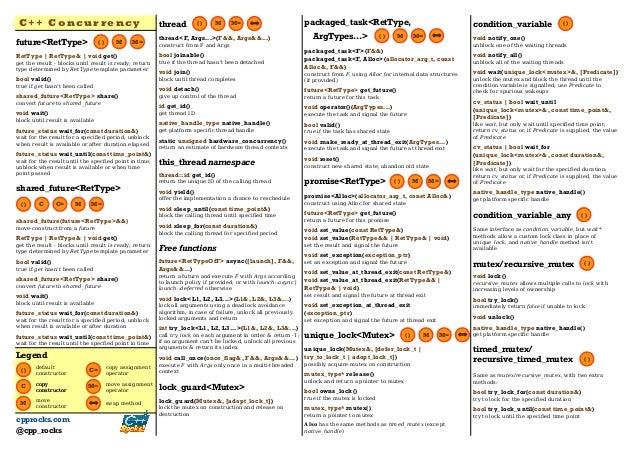Postgresql Cheat Sheet
- Postgresql Cheat Sheet Github
- Postgresql Commands Cheat Sheet
- Postgresql Cheat Sheet Pdf
- Postgres Cheat Sheet For Mysql Users
This is my personal cheat sheet for S QL, written with Postgres in mind but roughly applicable to other relational databases. This exclusively covers queries. This exclusively covers queries. No inserts, deletes, indexing or other Postgres functionality. PostgreSQL & PostGIS Cheatsheet. This is a collection of information on PostgreSQL and PostGIS for what I tend to use most often. Installing Postgres & PostGIS. The one-page guide to PostgreSQL JSON: usage, examples, links, snippets, and more.
Download this 2-page SQL Window Functions Cheat Sheet in PDF or PNG format, print it out, and stick to your desk.
The SQL Window Functions Cheat Sheet provides you with the syntax of window functions, a list of window functions, and examples. You can download this cheat sheet as follows:
Window Functions
Window functions compute their result based on a sliding window frame, a set of rows that are somehow related to the current row.
Aggregate Functions vs. Window Functions
Unlike aggregate functions, window functions do not collapse rows.
Syntax
Named Window Definition
PARTITION BY, ORDER BY, and window frame definition are all optional.
PARTITION BY
Postgresql Cheat Sheet Github
PARTITION BY divides rows into multiple groups, called partitions, to which the window function is applied.


Default Partition: With no PARTITION BY clause, the entire result set is the partition.

ORDER BY
ORDER BY specifies the order of rows in each partition to which the window function is applied.
Default ORDER BY: With no ORDER BY clause, the order of rows within each partition is arbitrary.
Window Frame
A window frame is a set of rows that are somehow related to the current row. The window frame is evaluated separately within each partition.
The bounds can be any of the five options:
UNBOUNDED PRECEDINGin PRECEDINGCURRENT ROWn FOLLOWINGUNBOUNDED FOLLOWING
The lower_bound must be BEFORE the upper_bound.
As of 2020, GROUPS is only supported in PostgreSQL 11 and up.
Abbreviations
| Abbreviation | Meaning |
|---|---|
UNBOUNDED PRECEDING | BETWEEN UNBOUNDED PRECEDING AND CURRENT ROW |
n PRECEDING | BETWEEN n PRECEDING AND CURRENT ROW |
CURRENT ROW | BETWEEN CURRENT ROW AND CURRENT ROW |
n FOLLOWING | BETWEEN AND CURRENT ROW AND n FOLLOWING |
UNBOUNDED FOLLOWING | BETWEEN CURRENT ROW AND UNBOUNDED FOLLOWING |
Default Window Frame
- If
ORDER BYis specified, then the frame isRANGE BETWEEN UNBOUNDED PRECEDING AND CURRENT ROW. - Without
ORDER BY, the frame specification isROWS BETWEEN UNBOUNDED PRECEDING AND UNBOUNDED FOLLOWING.
Postgresql Commands Cheat Sheet
Logical Order of Operations in SQL
FROM,JOINWHEREGROUP BY- aggregate functions
HAVING- window functions
SELECTDISTINCTUNION/INTERSECT/EXCEPTORDER BYOFFSETLIMIT/FETCH/TOP
You can use window functions in SELECT and ORDER BY. However, you can't put window functions anywhere in the FROM, WHERE, GROUP BY, or HAVING clauses.
- Ranking Functions
row_number()rank()dense_rank()- Distribution Functions
percent_rank()cume_dist()- Analytic Functions
lead()lag()ntile()first_value()last_value()nth_value()- Aggregate Functions
avg()count()max()min()sum()
Ranking Functions
row_number()- unique number for each row within partition, with different numbers for tied valuesrank()- ranking within partition, with gaps and same ranking for tied valuesdense_rank()- ranking within partition, with no gaps and same ranking for tied values
ORDER BY and Window Frame:rank() and dense_rank() require ORDER BY, but row_number() does not require ORDER BY. Ranking functions do not accept window frame definition (ROWS, RANGE, GROUPS).
Distribution Functions
percent_rank()- the percentile ranking number of a row—a value in [0, 1] interval: (rank-1) / (total number of rows - 1)cume_dist()- the cumulative distribution of a value within a group of values, i.e., the number of rows with values less than or equal to the current row’s value divided by the total number of rows; a value in (0, 1] interval
ORDER BY and Window Frame: Distribution functions require ORDER BY. They do not accept window frame definition (ROWS, RANGE, GROUPS).
Analytic Functions
lead(expr, offset, default)- the value for the row offset rows after the current; offset and default are optional; default values: offset = 1, default =NULLlag(expr, offset, default)- the value for the row offset rows before the current; offset and default are optional; default values: offset = 1, default =NULL

ntile(n)- divide rows within a partition as equally as possible into n groups, and assign each row its group number.
ORDER BY and Window Frame:ntile(), lead(), and lag() require an ORDER BY. They do not accept window frame definition (ROWS, RANGE, GROUPS).
first_value(expr)- the value for the first row within the window framelast_value(expr)- the value for the last row within the window frame
Note: You usually want to use RANGE BETWEEN UNBOUNDED PRECEDING AND UNBOUNDED FOLLOWING with last_value(). With the default window frame for ORDER BY, RANGE UNBOUNDED PRECEDING, last_value() returns the value for the current row.
Postgresql Cheat Sheet Pdf
nth_value(expr, n)- the value for the n-th row within the window frame; n must be an integer
ORDER BY and Window Frame:first_value(), last_value(), and nth_value() do not require an ORDER BY. They accept window frame definition (ROWS, RANGE, GROUPS).

Aggregate Functions
Postgres Cheat Sheet For Mysql Users
avg(expr)- average value for rows within the window framecount(expr)- count of values for rows within the window framemax(expr)- maximum value within the window framemin(expr)- minimum value within the window framesum(expr)- sum of values within the window frame
ORDER BY and Window Frame: Aggregate functions do not require an ORDER BY. They accept window frame definition (ROWS, RANGE, GROUPS).
You may also like
